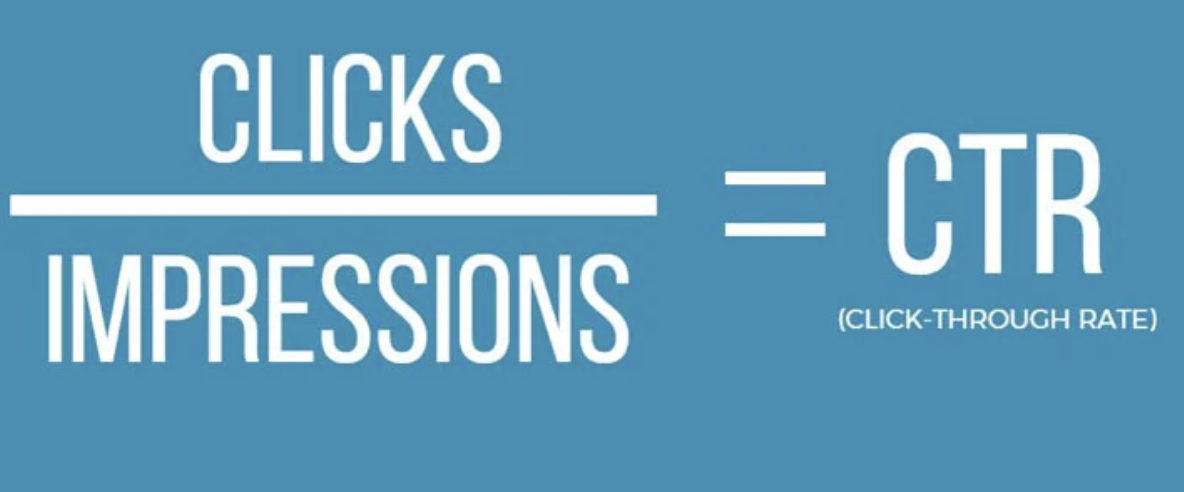Achieving Success With Targeted CTR Control
The optimization of click-through rates (CTR) is an essential endeavor for brand names aiming to boost their digital presence and make best use of interaction. Targeted CTR adjustment includes a range of strategies, from data-driven ad positionings to the growth of engaging web content tailored to particular audiences.
Comprehending Click-Through Rates
Click-through rates (CTR) offer as a vital statistics in digital advertising and marketing, mirroring the effectiveness of on the internet web content in driving individual interaction. This metric is calculated by separating the variety of clicks an advertisement or web link gets by the overall variety of perceptions, shared as a portion (CTR Manipulation). A higher CTR suggests that the content reverberates well with the target market, motivating them to take action
Recognizing CTR is important for marketers intending to optimize their campaigns. Different elements influence CTR, including advertisement positioning, layout, and the relevance of the material to the target market's rate of interests. For example, engaging headlines and visually attractive images can dramatically enhance the probability of users clicking a link.
Furthermore, the context in which the material is presented plays a vital role in establishing CTR. Eventually, an extensive understanding of CTR empowers marketers to fine-tune their methods, guaranteeing that electronic campaigns accomplish their preferred results effectively.
Value of CTR Manipulation
In the competitive landscape of digital marketing, the manipulation of click-through rates (CTR) has actually become an essential approach for improving project efficiency. CTR functions as a key efficiency indicator, showing the effectiveness of on-line ads and material in attracting user interaction. A higher CTR not only indicates higher interest but likewise can result in improved internet search engine positions and lower cost-per-click (CPC) rates, consequently enhancing general advertising budget plans.
The relevance of CTR control exists in its ability to educate online marketers about customer choices and behaviors. By analyzing CTR information, companies can determine which aspects of their campaigns reverberate most with their target market. This insight permits more educated decision-making and the allocation of sources to the most efficient channels.
In addition, efficient CTR manipulation cultivates an affordable advantage. Thus, understanding CTR manipulation is not just useful; it is crucial for attaining continual success in electronic marketing efforts.
Strategies for Targeted CTR
Achieving targeted click-through rates (CTR) needs a calculated approach that encompasses numerous strategies customized to certain target market segments. One effective method is maximizing ad positionings by making use of data analytics to identify high-performing networks. By focusing initiatives on these channels, marketing professionals can improve visibility and rise interaction.
An additional essential approach is crafting compelling headlines and phones call to action (CTAs) A/B testing various variations can disclose which combinations resonate most with the target market, consequently driving higher CTR. In addition, incorporating visual aspects such as eye-catching pictures or video clips can substantially improve charm, making content extra engaging and shareable.
Customization also plays an essential function; making use of user data to create customized web content can foster a sense of relevance, motivating clicks. Leveraging social evidence via endorsements and user-generated content can develop count on, eventually enhancing CTR.
Analyzing User Behavior
 Comprehending user actions is important for optimizing advertising approaches and read what he said boosting general performance. By examining exactly how individuals interact with web content, online marketers can get valuable understandings right into choices, motivations, and discomfort points. This understanding makes it possible for the development of even more targeted projects that reverberate with particular target market sectors.
Comprehending user actions is important for optimizing advertising approaches and read what he said boosting general performance. By examining exactly how individuals interact with web content, online marketers can get valuable understandings right into choices, motivations, and discomfort points. This understanding makes it possible for the development of even more targeted projects that reverberate with particular target market sectors.To efficiently evaluate customer habits, numerous devices and methods can be employed. Internet analytics platforms give information on individual involvement metrics such as click-through rates, bounce rates, and time invested on page. Heatmaps and session recordings enable marketing experts to envision customer communications, disclosing which components draw in attention and which may be forgotten.
Additionally, user responses with surveys and responses kinds can provide qualitative insights, enhancing the understanding of individual belief and contentment. pop over to this site Segmenting users based on demographics, passions, and habits can additionally improve targeting initiatives, customizing material to satisfy diverse requirements.
Ultimately, continual analysis of user actions is important for adjusting advertising and marketing methods in real-time. As user trends evolve, staying attuned to these adjustments makes certain that campaigns stay relevant and reliable, cultivating a deeper connection with the target market. This foundational understanding sets the phase for the effective application of targeted CTR control methods.
Determining Success and Changing Methods
Determining success in targeted marketing projects calls for a strategic technique that incorporates performance metrics with recurring evaluation. Key performance indications (KPIs) such as click-through rates (CTR), conversion prices, and client purchase expenses have to be kept track of continually to assess the efficiency of adjustment techniques. By establishing a standard, marketing experts can evaluate adjustments in CTR and determine trends that show successful engagement or prospective imperfections.
Consistently analyzing these metrics enables the prompt adjustment of methods. For circumstances, if a particular project reveals a significant decrease in CTR, it might signify the demand for innovative modifications or a reevaluation of targeting parameters. Employing A/B screening can further refine methods by contrasting variants of ads or landing web pages, supplying understanding right into what resonates finest with the target market.
Furthermore, including qualitative responses via studies or individual interviews can supplement quantitative data, using a detailed sight of target market perception. Eventually, the ability to iteratively analyze and fine-tune strategies based on real-time data promotes an extra responsive advertising and marketing strategy, guaranteeing that projects stay lined up with organization purposes and target market choices. This adaptive technique is essential in accomplishing sustained success in targeted CTR manipulation.
Final Thought
In final thought, targeted CTR adjustment is crucial for enhancing digital advertising and marketing efforts - CTR Manipulation. Ultimately, effective CTR adjustment not just enhances exposure however additionally fosters count on and reliability, therefore adding to sustained growth in competitive markets.
 Targeted CTR control includes an array of approaches, from data-driven advertisement positionings to the growth of compelling web content customized to particular target markets.Click-through rates (CTR) serve as a vital metric in electronic advertising, mirroring navigate to these guys the performance of online content in driving individual engagement. A greater CTR suggests that the content reverberates well with the target audience, triggering them to take activity.
Targeted CTR control includes an array of approaches, from data-driven advertisement positionings to the growth of compelling web content customized to particular target markets.Click-through rates (CTR) serve as a vital metric in electronic advertising, mirroring navigate to these guys the performance of online content in driving individual engagement. A greater CTR suggests that the content reverberates well with the target audience, triggering them to take activity.CTR offers as an essential performance indicator, mirroring the efficiency of online ads and web content in drawing in user interaction.In conclusion, targeted CTR control is necessary for optimizing digital advertising initiatives.